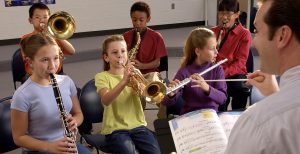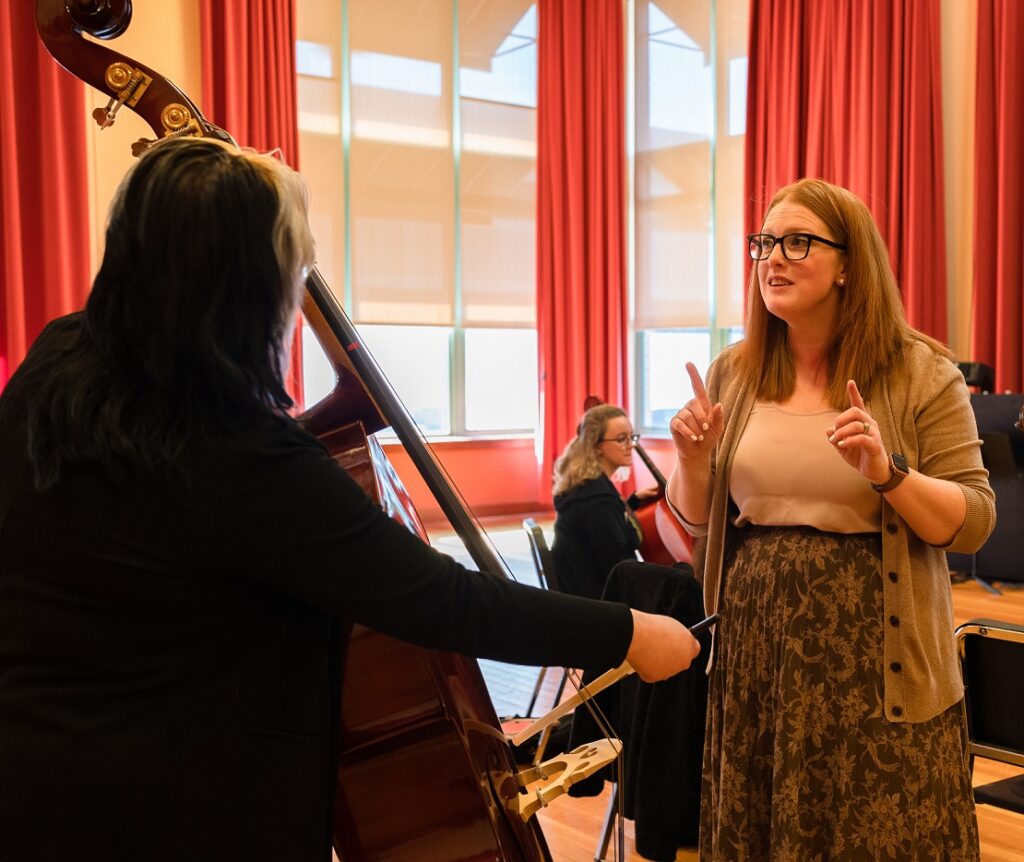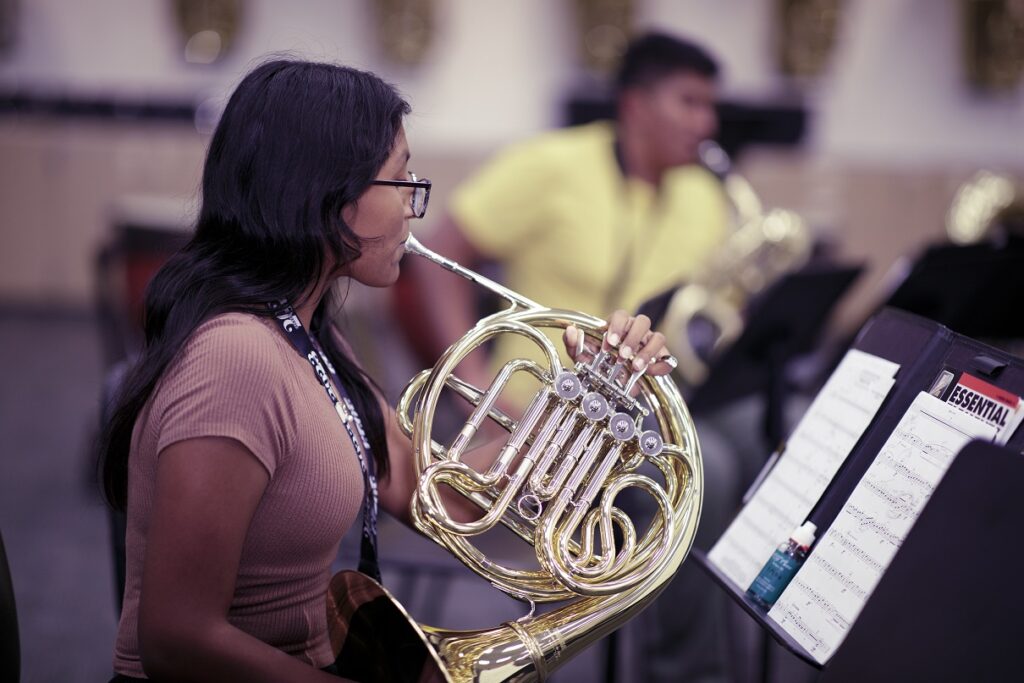Turning Your “Won’ts” into “Cans”
Don’t let students who will not participate in the learning process fall through the cracks. Turn them into participating, contributing class members by asking them questions and not accepting non-responses.
By winter break, music educators have had time to watch their students learn new things and progress, but they also start to notice those students who seem to be falling through the cracks. Usually, they are the ones who don’t volunteer to answer questions and often appear lost. The exchange between teacher and these students often sounds something like this:
Teacher (seeing a student who appears to not be following the music): “Walter, what note are you playing there?”
Student: “I don’t know.”
This is often followed by the teacher either providing the answer or asking another student to answer the question. The first student’s dilemma hasn’t been solved, and similar conversations continue to take place throughout the year.
Identifying the “Won’ts”
 In over 36 years of teaching, I have yet to come across a student who could not participate and learn, but I continue to meet those who will not participate in the learning process.
In over 36 years of teaching, I have yet to come across a student who could not participate and learn, but I continue to meet those who will not participate in the learning process.
I describe this type of student as a “won’t”— one who possesses the ability to answer a question or perform a task but isn’t motivated to do so. They are reluctant to respond or participate. In many programs, this type of student will continue to fail quietly.
Before exploring how to address these “won’ts,” it’s helpful to understand why they’re behaving the way they are. Often, they have missed one or several steps in the learning process usually due to absence or inattentiveness. Or perhaps this knowledge gap has gone unnoticed or unattended to by prior teachers. Sometimes these students haven’t been made to answer but have usually been provided the answers or allowed not to answer. (It is important to note here that I am not talking about students with a specific learning disability or special educational need, which requires another level of awareness and sensitivity that must be considered before any of this.)
Be Relentless in Asking Questions
How do you convert this inactive student to be a participating, contributing member of your class? Something that has worked for me with my middle school students is to be relentless in the process of asking questions and not accepting a non-response. Often this requires digging a little deeper with your questioning process. As an example, an exchange with that initial student might go like this:
Teacher: “Walter, what note is that?”
Student: “I don’t know.”
Teacher: “Let’s help you find it. Is it on a line or space?”
Student (looks for a moment): “A line.”
Teacher: “Okay, that’s correct. Let’s go from there — what’s the name of that line?”
Student: (appears unsure) “C? E?”
 Teacher: “How many lines up is it?”
Teacher: “How many lines up is it?”
Student (looks at note for a moment): “Three.”
Teacher: “Okay, great. Now, what is the letter name of that line on our staff on the wall?”
Student (stares at wall for a moment): “Um, B?”
Teacher: “Well, that would be correct if you played a treble clef instrument, but Walter, your instrument plays in the bass clef. What would the letter name of that note be in bass clef?”
Student: (Looks again): “Uh, D?”
Teacher: “Great! Now we’re getting somewhere. What position do you use for D?”
Student: “I don’t know.”
Teacher: “Okay, that note is on your fingering chart, take a look and find a note that matches it.”
Student (slowly flips to chart then looks for a moment): “Fourth?”
Teacher: “Great! That note is in fourth position. What was its name again?”
Student: “D.”
Teacher: “And what position is D in?”
Student: “Fourth.”
At this point, you’re finally ready to move on. Now, many of you probably found that minute-and-a-half conversation painful (and perhaps familiar), but that investment in time should pay off over time. In the process, the student produced four correct answers that were acknowledged by the teacher — something that likely doesn’t happen daily for that student. That’s progress already, but it would be foolish to assume that’s the last time the conversation would be held. Let’s imagine the next time…
Teacher: “So Walter, how do you play that note?”
Student: “I don’t know.”
Teacher: “Is it on a line or a space?”
Student: “A line.”
Teacher: “Great. How many lines up?”
Student: “Three.”
Teacher: “Okay, great. What’s the name of that line?”
Student: “It’s D.”
Teacher: “Excellent. What’s the position for D?”
Student (looks back through the book for a few seconds): “It’s fourth.”
Teacher: “You’re getting faster! So how do you play the note D?”
Student: “Fourth position.”
 Notice how much shorter this conversation was, and once again, the student has experienced success in and appropriate recognition for providing answers in class.
Notice how much shorter this conversation was, and once again, the student has experienced success in and appropriate recognition for providing answers in class.
At this point, I’ll continue to prod this student with similar questions at every opportunity, making him my “go-to” person for note name or position questions. The responses will tend to come faster. Usually what also will happen is that the student will get annoyed at always being asked questions, so they start to prepare the answer before you ask:
Teacher: “So Walter…“
Student: “It’s D, fourth position!”
Teacher: “Thank you.”
Now the real magic begins when a different student makes a similar error.
Teacher: “Ashika, what note are you playing?”
Ashika: “I don’t know.”
Teacher: “Walter, tell her what note it is.”
Walter: “It’s D, fourth position!”
And bingo! Walter has just experienced the power of owning knowledge that someone else does not have. Perhaps for the first time. For some students, this is a powerful moment — you’ll see it in their reaction. Others may not even realize what they’ve just done, so you’ll need to point it out:
Teacher: “Walter that’s pretty cool to have an answer someone else needs, isn’t it?!”
Walter (smiles)
A Simple and Powerful Process
Empowering students with knowledge and the process to gain new knowledge can be an educational turning point for some, and even life changing if they can transfer it to other classes.
 This process sounds simple because it is. Some important things to consider are the following:
This process sounds simple because it is. Some important things to consider are the following:
- Remember that it is an ongoing process. Just doing this once won’t alter a student’s behavior. Your consistency will lead to more consistent student behavior.
- Your tone in leading the student through the questions is key. Be calm and encouraging and offer authentic praise (do not overdo it).
- It’s helpful to follow your questioning of one student by asking one or two other more reliable students similar questions. This produces a model for reluctant students and keeps the rest of the class on their toes knowing that they might be asked a question as well.
- If you find you’re not receiving the right type of answers, consider how you’re asking the questions. Avoid questions that can be answered with just “yes” or “no.” Instead, ask those that require more specific answers. Often, we need to simplify the wording of our questions to be more direct.
- Do not show your frustration with students’ reluctance to respond. Understand that there may be one or more contributing factors other than their lack of attention or knowledge.
- Always encourage students who provide an appropriate answer (which may not always be the correct one). In doing so, you are encouraging participation and providing positive reinforcement that will encourage further participation.
As you work your way through your classes and identify your “won’ts” and focus on turning them into “cans,” you are developing a classroom culture that values knowledge. Make a big deal when students learn the process of finding the information they need, and celebrate when they use that information appropriately. This will create that “can-do” attitude in your classes, and you’ll find yourself facing less “won’ts” each week! Use the opportunity of a new year, new semester, quarter or even the start of a new week to reset these students and point them toward success.
















